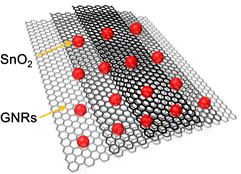Super Li-ion batteries
Friday 28 June 2013
The current IB chemistry syllabus includes the chemistry of buckminsterfullerene and use of nanotechnology. In keeping with recent developments in chemistry, the new programme for teaching from September 2014 is likely to also include graphene and graphone. The current syllabus also covers the lithium ion battery and this is likely to also be included in the new programme under Option C- Energy.
 A recent publication in ACS Nano from James Tour and colleagues from Rice University in the US describes how graphene nanoribbons have been used to enhance the anode of lithium ion batteries. This increases the capacity to more than double that currently used. If this can be reproduced commercially then it could have big implications for many different types of technology that are currently limited by relatively short battery life. The long ribbons of carbon that are only one atom thick are combined with tin(IV) oxide, SnO2, nanoparticles to form a framework.This keeps the tin oxide nanoparticles from fragmenting during cycling which helps to prolong the life and capacity of the battery.
A recent publication in ACS Nano from James Tour and colleagues from Rice University in the US describes how graphene nanoribbons have been used to enhance the anode of lithium ion batteries. This increases the capacity to more than double that currently used. If this can be reproduced commercially then it could have big implications for many different types of technology that are currently limited by relatively short battery life. The long ribbons of carbon that are only one atom thick are combined with tin(IV) oxide, SnO2, nanoparticles to form a framework.This keeps the tin oxide nanoparticles from fragmenting during cycling which helps to prolong the life and capacity of the battery.

